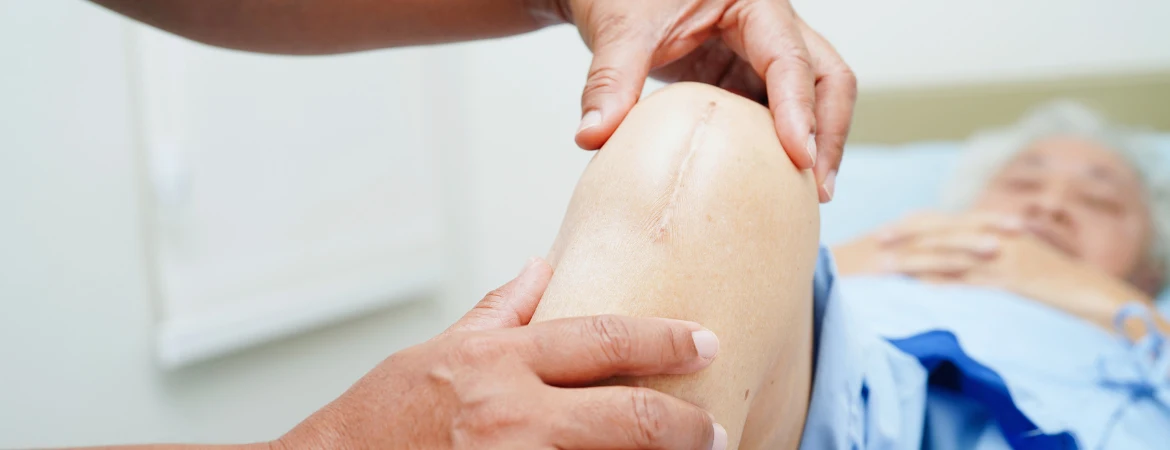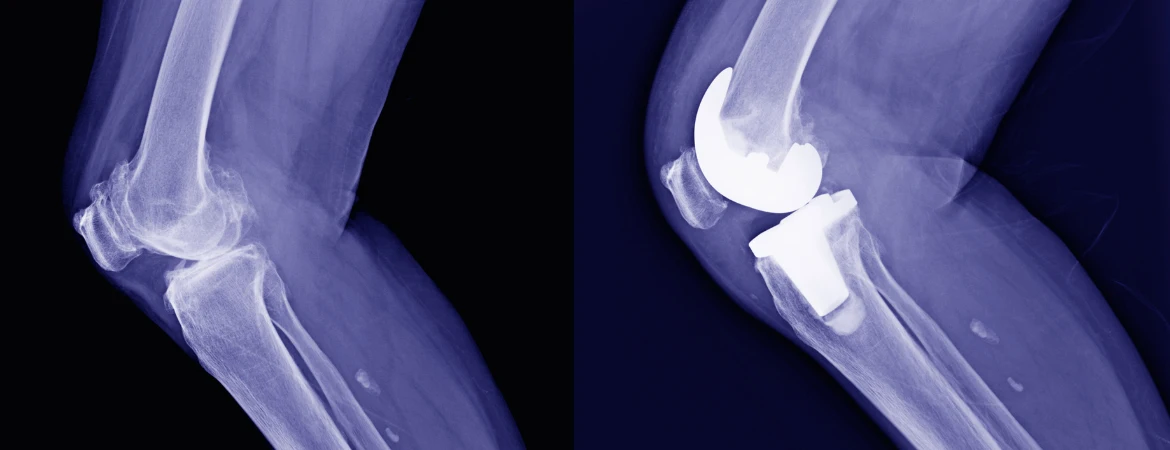
Embarking on a journey through knee arthroplasty can be a pivotal decision for those experiencing chronic knee pain and immobility. With a focus on facilitating a successful rehabilitation, this guide serves as a trusted companion for patients navigating through the recovery process. Essential care post-surgery, provided by a specialized orthopedic clinic, can significantly influence the outcome. These tailored post-surgery tips are crafted to ensure a seamless transition back to day-to-day activities. Understanding the intricacies of knee arthroplasty recovery is key, and with this authoritative guide, patients are equipped with the knowledge needed to regain comfort and mobility while minimizing potential setbacks.
Table of Contents
ToggleWhat is Knee Arthroplasty?
The term knee arthroplasty, often interchangeably used with knee joint replacement surgery, refers to a medical intervention designed to relieve pain and restore function in severely diseased knee joints. Exploring the knee arthroplasty definition reveals that it encompasses the substitution of the damaged knee components with artificial implants. A deeper look into this procedure confirms that it is a reliable surgical solution for individuals experiencing severe discomfort, usually resulting from degenerative diseases such as osteoarthritis, rheumatoid arthritis, or post-traumatic arthritis.
- Knee arthroplasty is a complex procedure that involves precise surgical techniques to remove and replace the compromised surfaces of the knee joint. The artificial joint is meticulously assembled using several components:
- A metal femoral component that caps the end of the thigh bone (femur).
- A metal tibial component to cover the top of the shin bone (tibia).
- A plastic spacer that provides a smooth gliding surface between these two metals and functions like natural cartilage.
This combination of materials in knee joint replacement surgery aims to offer patients a return to their daily activities with diminished pain and increased mobility. The success of knee arthroplasty lies in its ability to mimic the natural movements of the knee, allowing for a significant improvement in the quality of life for those who suffer from chronic knee conditions.
Types of Knee Replacement Surgeries
When it comes to knee replacement surgery, patients have several options to consider, each designed to accommodate specific conditions and recovery goals. The choice between a total knee replacement, a partial knee replacement, or a minimally invasive knee replacement is made in collaboration with an orthopedic surgeon, who will evaluate your unique situation to recommend the best approach.
- Total Knee Replacement: This procedure is the most comprehensive solution for those suffering from severe knee damage. It involves the replacement of all three compartments of the knee joint, providing a brand-new surface and aiming to restore full function to the knee.
- Partial Knee Replacement: Also known as unicompartmental knee replacement, this option targets only the affected part of the knee. By addressing the damaged area while keeping the healthy parts intact, recovery can be quicker compared to a total replacement.
- Minimally Invasive Knee Replacement: By using advanced surgical techniques that require smaller incisions and cause less tissue disruption, this method can potentially reduce hospital stays and support a faster return to everyday activities.
The decision to pursue a total knee replacement, partial knee replacement, or minimally invasive knee replacement will depend on several factors, including the extent of knee damage, patient age, activity level, and overall health. Selecting the proper surgery type is a critical step in ensuring a successful outcome and a smoother, more efficient recovery process.
Preparing for Knee Replacement Surgery
Embarking on the journey towards knee replacement surgery necessitates meticulous pre-operative preparations. From arranging your home to suit your post-surgery needs to undertaking thorough medical evaluations, the steps you take now can significantly influence your recovery process. Incorporating recommended lifestyle adjustments is not only beneficial for the surgery itself but these changes also pave the way for a healthier post-operative life.
A critical aspect of pre-operative preparations is a comprehensive medical evaluation. This involves a collection of blood tests to check for any conditions that may complicate surgery or anesthesia. Imaging scans, such as X-rays or MRIs, provide your surgeon with a detailed view of your knee structure, aiding in surgical planning. It’s essential to discuss all medications and supplements you’re currently taking with your healthcare provider as some may need to be paused or adjusted.
Lifestyle adjustments also play a pivotal role in your surgery’s success. If you smoke, quitting as soon as possible can drastically reduce surgery risks and improve healing time. For those with excess weight, shedding pounds can lessen the stress on your new joint. Furthermore, strengthening the muscles around the knee through prescribed exercises can aid in recovery.
- Consult with your healthcare team for personalized medical advice.
- Quit smoking to decrease the risk of surgical complications.
- If recommended, lose weight to ease post-operative recovery.
- Engage in approved physical activities to strengthen the knee area.
- Plan home modifications, such as safety bars or a shower chair, for post-operative ease.
Bear in mind, an environment conducive to healing is just as important as the physical preparations. Simple home modifications can create a safe haven for your post-surgery recuperation. Removing tripping hazards, setting up a comfortable recovery area, and ensuring essential items are within easy reach can all contribute to a seamless and stress-free recovery.
Post-Operative Care Essentials
Following knee arthroplasty, adhering to detailed post-operative care instructions is paramount to ensure a swift and complication-free recovery process. These instructions are designed to provide you with a structured approach to managing your wellbeing during the critical healing phase. Effective pain management strategies, comprehensive wound care practices, and a strict regimen of medication protocols form the cornerstone of successful post-operative care. Let’s explore these essential components further.
Pain Management: Immediately after surgery, experiencing discomfort is common. However, pain should not impede your ability to participate in rehabilitation or compromise the quality of your rest. To effectively manage pain, clinicians may prescribe a combination of medications, which could include anti-inflammatories, analgesics, and occasionally, narcotics for short-term use. Remember that pain management is a collaborative effort between you and your healthcare provider, so open communication about your pain levels is crucial.
Rehabilitation After Knee Arthroplasty
Following knee arthroplasty, embarking on a well-structured rehabilitation program is essential to reclaim your knee’s capabilities. Recovery hinges on meticulous knee rehabilitation exercises, which are fundamental to enhancing the strength and range of motion of the treated joint. The journey commences in the hands of skilled physical therapy practitioners, whose expertise lays the groundwork for an effective healing process.
A cornerstone of recovery, physical therapy intentionally commences soon after surgery, encouraging gentle movements that pave the way for more complex exercises down the line. The focus is to amplify flexibility and to mobilize the joint, ensuring that regained motion translates into practical, everyday activities.
- Initiate with mild stretches to stimulate blood flow and warmth in the muscles surrounding the knee.
- Safely progress to weight-bearing activities that support the building of musculature.
- Integrate proprioceptive training, essential for balance and coordination, which also aids in preventing future injuries.
Engaging in a variety of knee rehabilitation exercises is the bedrock of a successful rehabilitation plan. The selection of exercises often includes leg lifts, wall squats, and step-ups. Coordination with your physical therapist ensures that each exercise is executed with proper form and the exact intensity required for optimal healing.
The Role of Physical Therapy in Knee Arthroplasty Recovery
The importance of physical therapy post knee arthroplasty cannot be overstated. It’s a vital component in ensuring patients regain their pre-surgery levels of functionality and comfort. Expert guidance in physical therapy significantly contributes to the management and alleviation of pain, a primary concern for many post-surgery patients. Additionally, physical therapists devise specialized exercise regimens focused on muscle strengthening, which fortify the muscles around the knee, subsequently aiding in improved support and movement.
Enumerating the benefits of physical therapy, it is imperative to address its role in enhancing mobility. With the right therapeutic exercises, patients notice a marked improvement in flexibility and a reduction in stiffness. This leads to an overall functional improvement, enabling a return to daily activities and a higher quality of life. For many, the targeted interventions crafted by physical therapists are a cornerstone of an effective recovery strategy.
- Assessment of individual patient needs for tailored therapy sessions.
- Guided exercises and stretches to restore range of motion.
- Education on proper movement and body mechanics.
- Strategic pain management and swelling reduction techniques.
- Progress tracking to ensure recovery milestones are met.
Understanding the recovery timeline is crucial for setting realistic expectations post knee arthroplasty. It’s a gradual process that requires patience and persistence. The initial weeks involve managing discomfort and inflammation, followed by a phase where mobility starts to return. Over time, patients engage in more strenuous activities, recalibrating their bodies to adapt to their new knee joint. While each patient’s recovery timeline can vary, physical therapy is the consistent thread that weaves through each stage, ensuring that recovery is as swift and seamless as possible.
Understanding Risks and Complications
Undergoing knee arthroplasty marks a significant step towards regaining mobility and improving quality of life. However, it’s imperative for patients to be conversant with possible knee replacement complications, which, while rare, can impact recovery when not properly managed. This awareness is fundamental to fostering a safe and effective healing journey.
Common Post-Surgery Complications
Though knee arthroplasty boasts a high success rate, there are known risks involved. Identifying the early signs of complications is critical. Infection stands among the foremost concerns, potentially requiring antibiotics or additional surgery if severe. Blood clots are another risk, which could necessitate blood-thinning medications. Additionally, instances of implant failure might call for a revision surgery, especially if the artificial knee begins to loosen or wear over time.
Signs and Symptoms to Monitor
Post-surgery vigilance is key in spotting signs of complications and preventing escalation. Redness, swelling, and warmth around the incision site may indicate an infection, and significant pain or discomfort might suggest blood clot formation. Should you experience unusual stiffness, a decrease in mobility, or audible noises from the implant, these could be the early warnings of knee replacement complications necessitating immediate medical attention.
Preventative Measures Post-Surgery
Proactive preventative measures constitute an essential aspect of the recovery process. To minimize the risk of complications, strict adherence to wound care protocols, medication schedules, and physician follow-up appointments is essential. Engaging diligently in prescribed physical therapy exercises enhances muscle strength and joint flexibility, acting as a preventive measure against potential complications. By understanding and incorporating these strategies, patients can improve their prospects for a smooth and successful recovery from knee arthroplasty.





